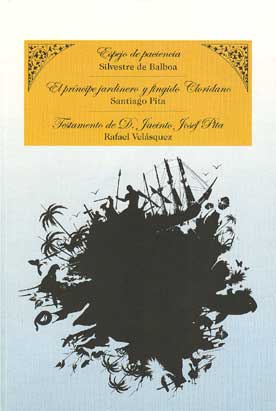1.4 Beginnings of choteo in literature: the work “Testament of D. Jacinto Josef Pita”, written by Rafael Velázquez after 1762

Choteo, a very Latin American and Caribbean way of naming or conceiving humor, is inextricably linked to the Creole class and its progressive cultural differentiation from its Spanish ancestors and Black roots, without denying any of these sources; the phenomenon even merited a separate study, carried out years later by Jorge Mañach in his essay “Indagación del choteo.”
This was already present in popular life as a symbolic escape from the oppressive atmosphere that prevailed in colonial society; but its emergence in literature indicates a further step in the awareness of the indigenous and the elevation of popular themes to the level of art.
Priest Rafael Velásquez was born and lived in Havana, but it has not been possible to determine the exact years of his life; the only known work of his, “Testament of D. Jacinto Josef Pita,” was written sometime between the capture of Havana by the English in 1762 and the end of the century.
The characters are all individuals who lived in the period, including the protagonist alluded to in the title of the text, whose fictional will is found by one of the characters. Reading it in the company of others weaves the plot and provides fodder for the recreation of a costumbrista scene in which a truly popular and streetwise language stands out, with a marked burlesque tone; at the same time, the influence of Spanish picaresque enriches the humorous conception of the work.
The discovery of the will reiterates the use of the text within the text, widely used in Hispanic literature. The work has not been definitively classified within any literary genre, only within the open space of prose and framed within the so-called costumbrista writing. However, the preeminence of dialogue places it among the antecedents of theater, and it also contains poetic passages, spoken by one of its characters, Juan Francisco Pita, a shoemaker and versifier, which provides a lyrical nuance that enriches the language of popular roots.
The text does not assume great pretensions from a purely literary perspective; but it does constitute testimony to a colloquial language that existed alongside that of the educated elites; and therefore to the existence and way of life of that very people, through the peculiarities of their linguistic register.
Although this work has not been studied in depth, its value in the annals of Cuban literature is recognized, and recently, in 2008, on the occasion of the commemoration of 400 years of literature on the island, the Letras Cubanas publishing house published a volume containing this and the texts of “Mirror of Patience” and “The Gardener Prince and the Fingido Cloridano,” thereby reclaiming its status as the inaugural work of our literature, especially with regard to the joke.








